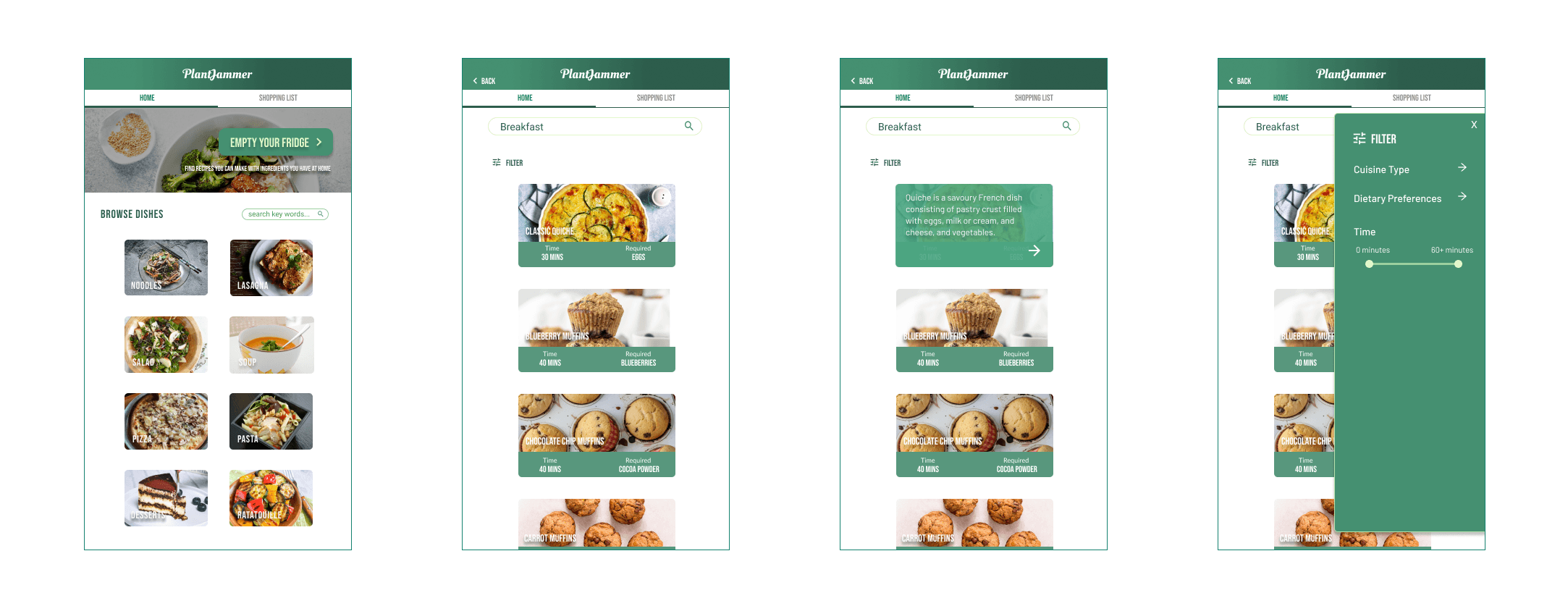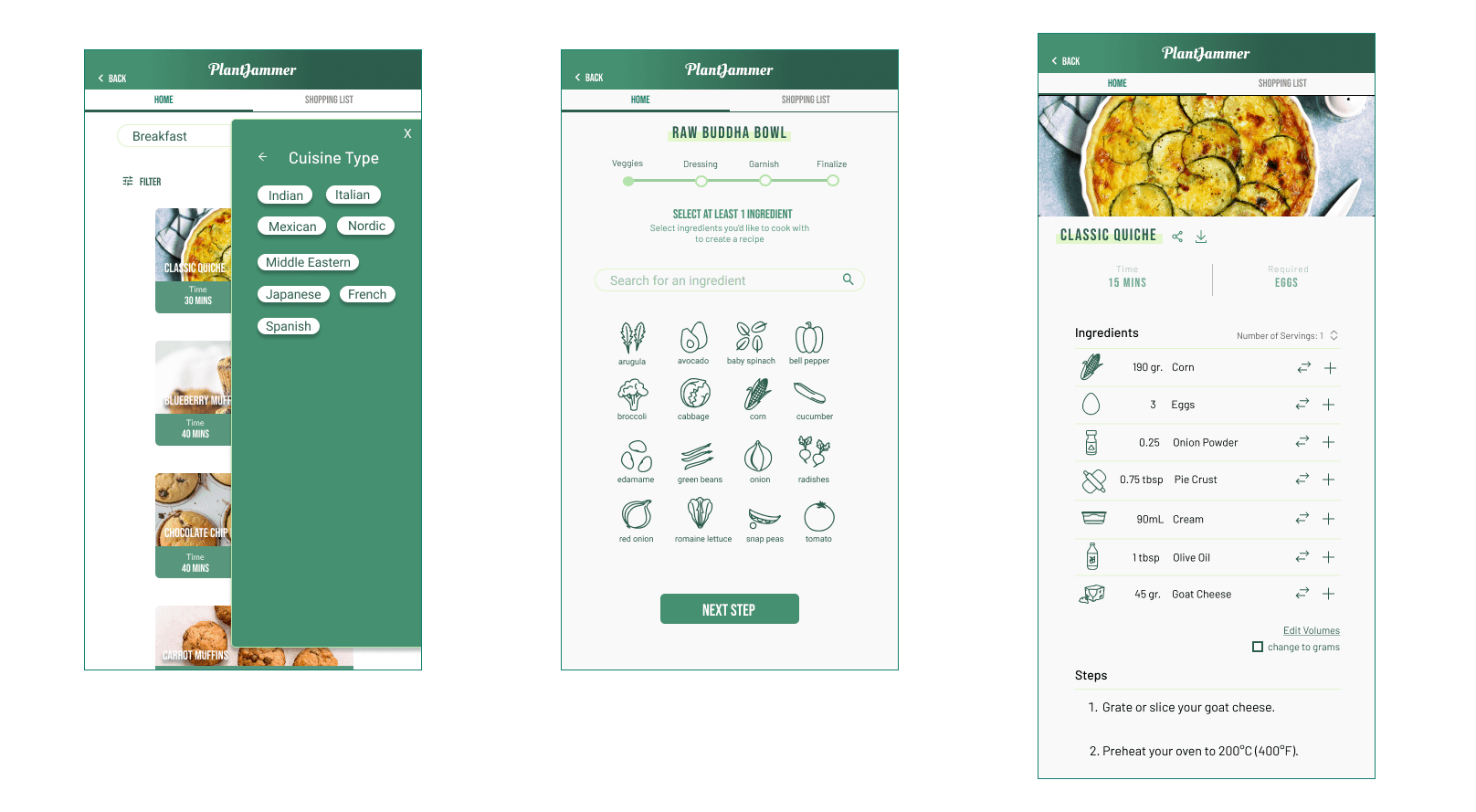From Cart to Kitchen: Reducing Food Waste
Company: PlantJammer
Role: UI/UX Designer, UX Researcher
Tools: Figma, Google Forms
Duration: March - May 2022
Team: Product Manager, Developer
Stakeholders: PlantJammer Team

Overview
PlantJammer, a company focused on reducing household food waste, needed a grocery store widget that would help users find recipes based on available ingredients, promoting sustainable meal planning while increasing grocery store engagement.
The Challenge
Encouraging new meal discovery
Most users relied on habitual cooking routines and were hesitant to try new recipes.
Seamless integration with grocery store platforms
How can we make recipe suggestions feel like a natural part of the shopping experience?
Research: Understanding User Needs
To design a widget that truly aligned with grocery shoppers' needs, I conducted:
User Surveys
Gathered data on cooking habits, grocery planning, and recipe discovery pain points.
Competitor Analysis
Evaluated existing recipe apps, identifying strengths and usability gaps.
Stakeholder Meetings
Defined MVP constraints, balancing user needs with business goals.
Key Insights from Research:
46% of users plan meals before grocery shopping, but lack of time is a major barrier to trying new recipes.
Missing ingredients and dietary restrictions were the top frustrations when cooking at home.
Users preferred minimal ingredient lists (1–4 new items max) when trying a recipe.
Design Iterations
To design a widget that truly aligned with grocery shoppers' needs, I conducted:
User Surveys
Gathered data on cooking habits, grocery planning, and recipe discovery pain points.
Competitor Analysis
Evaluated existing recipe apps, identifying strengths and usability gaps.
Stakeholder Meetings
Defined MVP constraints, balancing user needs with business goals.
Key Insights from Research:
46% of users plan meals before grocery shopping, but lack of time is a major barrier to trying new recipes.
Missing ingredients and dietary restrictions were the top frustrations when cooking at home.
Users preferred minimal ingredient lists (1–4 new items max) when trying a recipe.



Design Iterations
Improved Loading
The first prototype had too many categories and images displayed, causing long page-load times.
Proposed solution: Reduced categories to eight core options and introducing filter options and searching by tags for users to search for more specific categories.
Reducing Cognitive Overload
Filter tab initially had a number of options but this seemed to overwhelm users during usability sessions.
Proposed solution: Reduced filtering tab to only show essential options, allowing the other options to be browsed through search tags.




